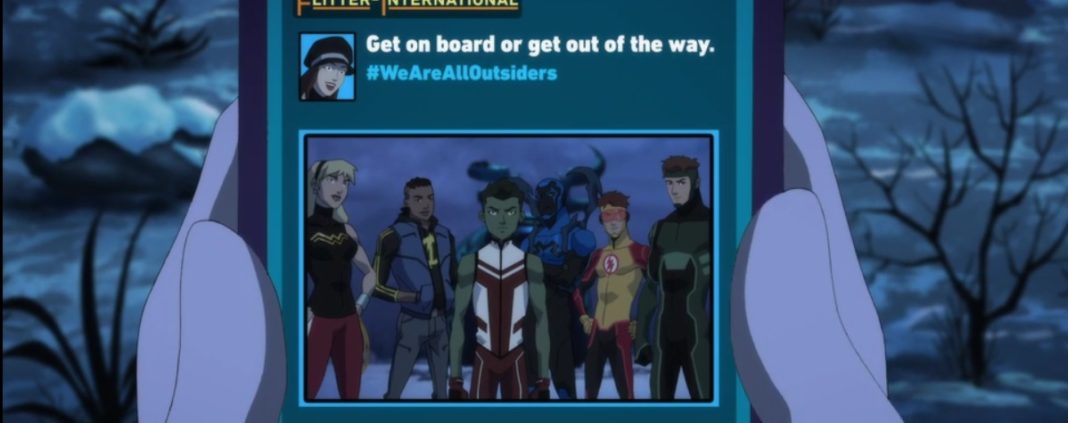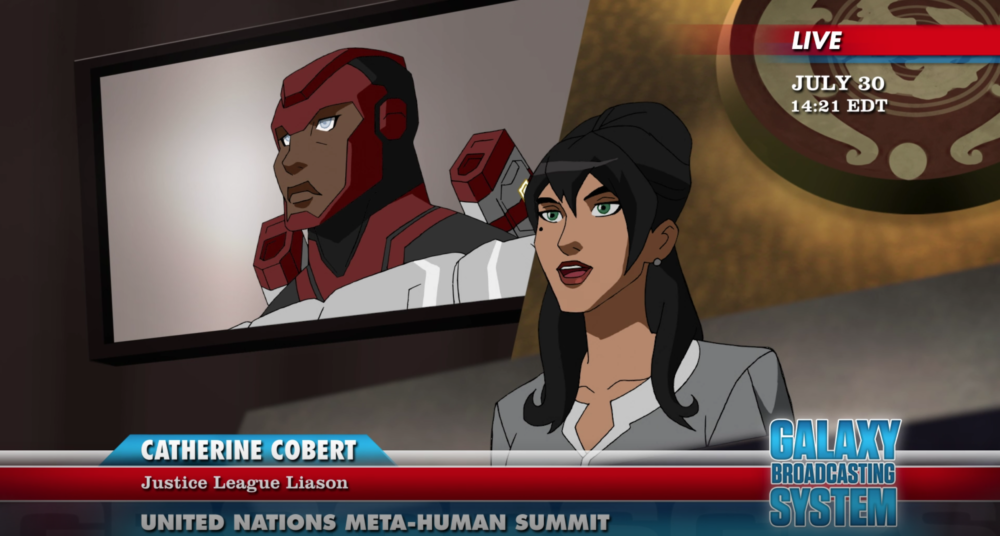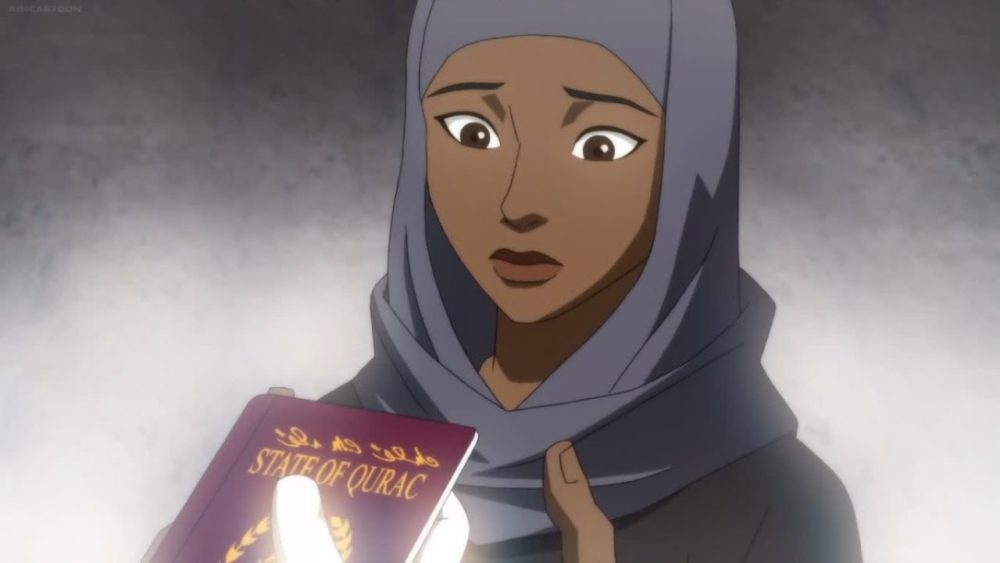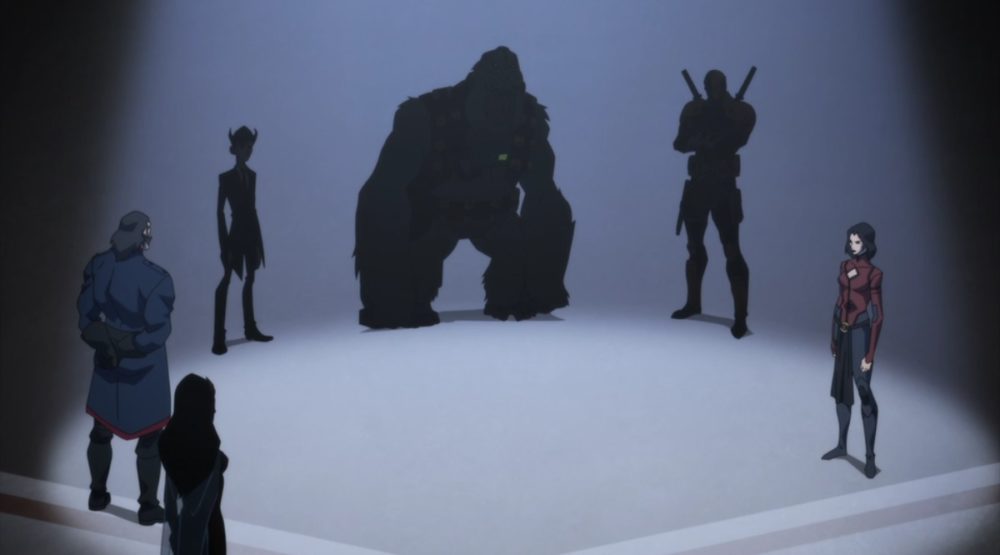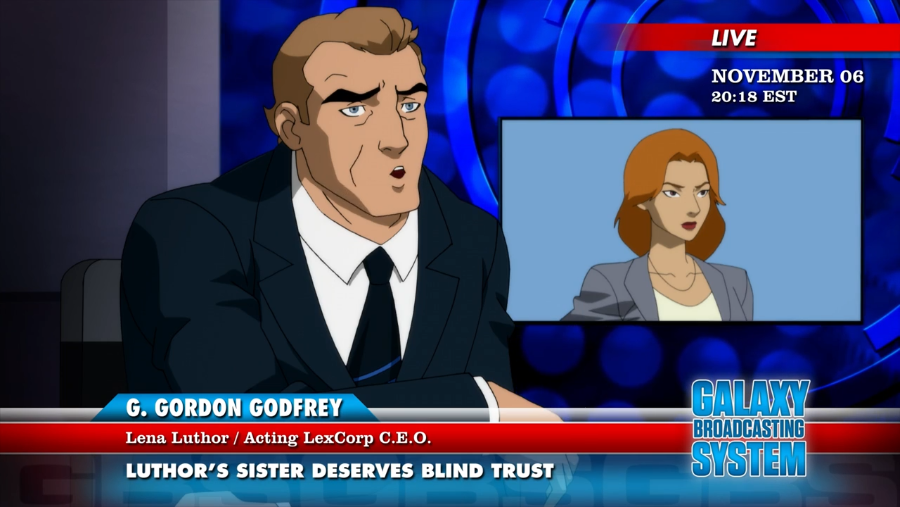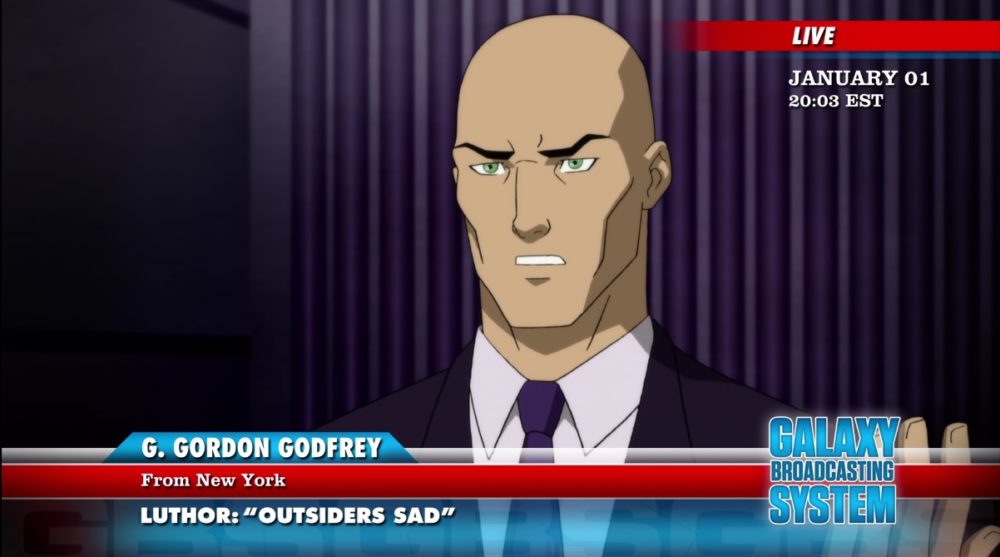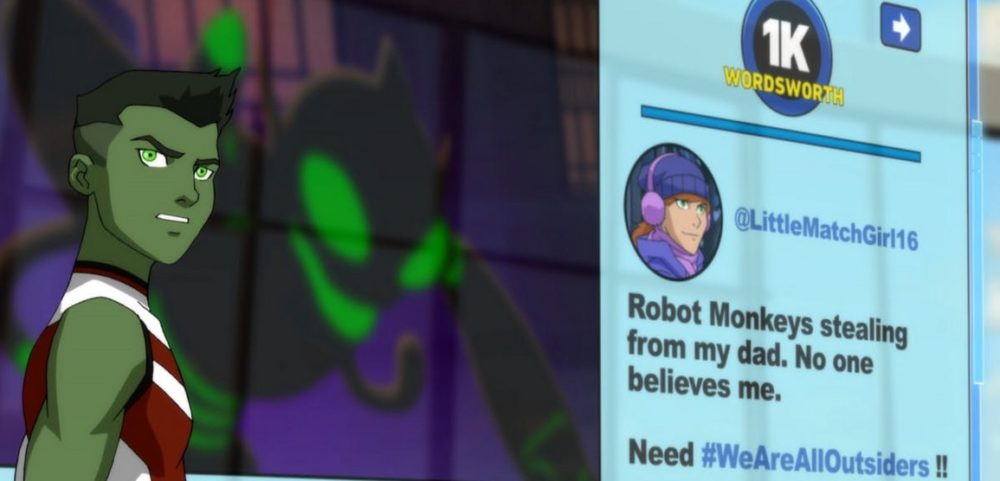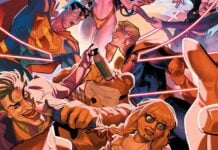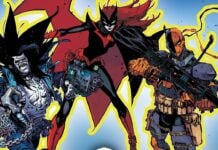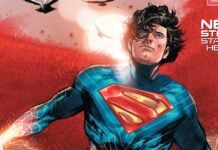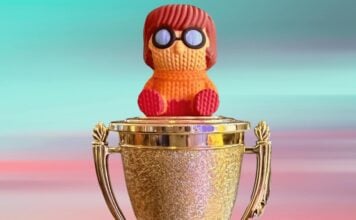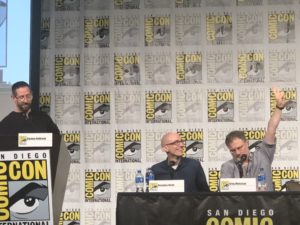
With the finale of Young Justice: Outsiders soon approaching on the DC Universe streaming service, fans prepared themselves for the very real possibility that the show they had worked feverishly to resurrect may end up canceled. So you can only imagine the thunderous applause that erupted at the DC Universe panel at San Diego Comic-Con 2019 when a fourth season was officially announced.
The Beat was fortunate to take part in a press roundtable with other media outlets with Young Justice: Outsiders producers Greg Weisman and Brandon Vietti. Notorious for keeping upcoming plot points close to the chest, it was a fascinating discussion of what went into developing Young Justice: Outsiders, as well as the role of social media platform Instagram, which they admitted during the panel was included in a partial tribute to the fan campaigns to revive Young Justice.
From the beginning of Young Justice, there has always been a theme of dissension in the team continuing with this season with Beast Boy arguing that the Justice League isn’t doing enough. Is that theme something you try to work into every story?
Greg Weisman: Well I think the one of the biggest themes for the entire series is just coming of age and growing up. And growing up encompasses rebellion. It encompasses not necessarily, “I hate my dad. I hate my mom,” kind of stuff but just having to assert one’s independence, hoping that your parents or your mentors have given you both roots and wings. As our characters continue to grow up and get older we continue to bring in young characters so that it’s still always Young Justice. [Laughs]. That evolution, revolution, rebellion is always going to be an aspect of the series.
Taimur Dar: I’m a big fan of Dwayne McDuffie and his Milestone comics work. I would have just been satisfied to see the Milestone characters like Rocket return in Young Justice: Outsiders, so it was an incredibly delightful surprise to see other Milestone characters like Hardware, Holocaust, and even baby Amistad appear. Could you talk about the thought process of bringing those characters into the show in regards to creating a sense of belonging and diversity which was a major goal of the Milestone line?
Brandon Vietti: Yeah, I mean it’s a goal of the show. First of all we’re building a DC Universe show but we also wanted to reflect the world around us. We wanted to be as diverse as possible. Dwayne’s work is influential on us and the show.
Weisman: We were huge Milestone fans. Let’s just start there.
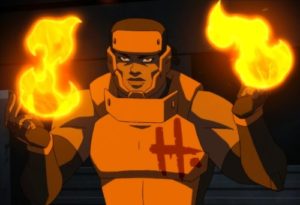
If a Season 4 didn’t happen, would you have considered a Young Justice movie?
Weisman & Vietti: [Laughs].
Weisman: We considered a Young Justice puppet show to continue the story.
Vietti: Any medium works for us.
Weisman: Seriously, those decisions are way above our pay grade and they’re not up to us. But we love this universe, this Earth-16 version of the DC Universe. We love these characters. We love the people we work with on the show. We will take any and every opportunity to keep telling stories in this setting with these characters keeping in mind that’s not a decision we get to make.
Halo has been a standout character this season and she’s special in that there hasn’t really been a character like her. What inspired you to create this version of Halo versus how she appears in the comics?
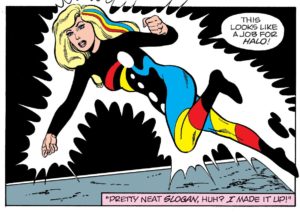
On top of that, as we were developing Season 3 years back, Syrian refugees in Europe were a huge issue and it was something that we wanted to deal with. Obviously we were dealing with meta-human trafficking which is a very unsubtle metaphor for human trafficking. And so the notion of this young Quraci girl seemed to fit and the dangers of meta-human trafficking and the vulnerability of a refugee. And you throw a Mother Box on top of it and that became our starting point.
Vietti: The whole idea of a spirit of a Mother Box sort of revivifying a dead body is an incredible science fiction idea. We really started to break down as we were writing what is a Mother Box, what is a Father Box and how does this work when a spirit from a Mother Box comes out goes into a dead body, comes alive and is now informed by biology and hormones that the technology of the Mother Box never supplied it before. It’s gotta create a lot of confusion and identity. As we started to write it out beat by beat, it became clear Mother Box doesn’t necessarily mean female. This is an alien piece of technology that we have dubbed a Mother Box. We have also dubbed the Father Box. It implies male and implies female. These are rough translations of a foreign alien device. It doesn’t necessarily mean that a Mother Box is female.
So in going through Halo’s story these things must be occurring to her with her new organics and new biology with the hormones that are going through her. It became to me a very clear question—is she actually female? I think this is a question that she would ask herself. And this is one that we decided to just play out in the show. Halo to me is sort of like this perfect science fiction teenager, if you will, in that she is an alien spirit waking up in a body and coming to know this body for the first time
Weisman: I remember waking up in what seemed like an alien body!
[Laughter]
Vietti: But also having to deal with issues of relationships and sexuality and religion. So many of these issues are coming at her and she is learning how to deal with them.
Weisman: On the fly.
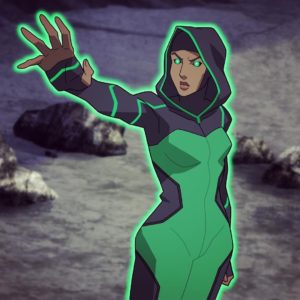
So is Dr. Jace somebody we can trust?
Vietti: She’s an enigmatic character isn’t she? [Long Pause].
Weisman: We don’t want to speculate on whether or not you can trust her.
Vietti: My silence is my answer. [Laughs].
This season has some great mustache twirling moments particularly with Lex Luthor and Granny Goodness appearing on the G. Gordon Godfrey show. Is it challenging to write villains who are constantly outwitting the heroes and playing the long game?
Weisman: I mean, everything is challenging I guess but that’s no more challenging than anything else to me. What we try to do is give all our characters—the good, the bad, everything in between—we give them agency. So we may say this happens, how is everybody going to react to that? Vandal [Savage] gathered a group of like-minded individuals. There have been changes in the lineup of the Light for various reasons. Ra’s al Ghul has decided that he doesn’t want to be part of it anymore. Lex and Queen Bee are some of the stalwarts. Lex is a lot of fun to write. G. Gordon Godfrey is a TON of fun to write.
Dar: As much as I miss Tim Curry voicing the role, I love what James Arnold Taylor is bringing to the character.
Weisman: James Arnold Taylor and David Kaye had really huge shoes to fill in taking over for Tim and Miguel [Ferrer]. We can’t say enough positive about Tim and Miguel. We can’t say enough positive about James and David. That’s not an enviable position to have to jump into. These are stunningly significant actors and with unique voices and unique acting skills. And for these guys to jump in and make it feel as seamless as they have is a knock out to me. Just a real testament not just to their talent but to their dedication to honoring the two guys that came before them. And that was very much what James and David both spoke about. They took this as not a gig but as a kind of responsibility that they were picking up the torch and trying to run with it. We really appreciated them.
Vietti: It is very difficult to write the villains to have them always ahead of the heroes, to get back to your original question. It’s funny we get asked sometimes what characters we relate to and I tend to say it’s always the villains because I think we spend most of our time plotting ways to destroy our heroes. Hopefully we fleshed out our heroes enough that they will sort of inform us on how to counter the villains. But early on we wanted to make sure that the villains weren’t stereotypical cartoon villains that were tripping over each other and their own greed and stuff like that. We needed them to work together and be deadly smart like deadly cooperative and make sure that they worked together very well. And that each of their specialties complemented the other so that they could one up each other. And this is the Light of course I’m referring to here.
Weisman: There are tropes in villain teams where all the heroes really need to do a stall because the villains will end up fighting with each other and wind up destroying their own plan because they can’t get along. And one of the very first things we both agreed on is that’s not going to be our villain team. They are going to get along very well. They’re going to cooperate with each other. It’s going to be very rare when they’re at odds and when that does happen it’s going to be clear and understandable. When Sportsmaster decides that he’s no longer going to be the enforcer for the Light, you know exactly why it’s taking place and what restitution he feels he needs.
Vietti: And the mustache twirling, I’m really sensitive to that too because I kind of hate that trope with villains. But we let some of the villains have that this season like the Godfrey show. Media has always been a very important part of the series. It’s been an important texture to sort of reflect what’s going on in the world around our heroes and villains.
Dar: I love the fact that Luthor has set up a blind trust in a not so subtle dig at Trump.
Vietti: Yeah, that that exchange that you’re talking about between Godfrey and Lex is just them egging each other on. So they are twirling mustaches and that really is to show how in control of the media the villains are in the series. And that is to set up the latter half of our third season.
Weisman: But Luthor is nothing like Trump. He has much better hair.
[Laughter]
Vietti: Obviously, we’re setting up Beast Boy and a social media war through his team, the Outsiders, against Lex specifically and Gretchen Goode as well who of course is Granny Goodness. It’s a different kind of story for us but still dovetails with the covert-ops stories we’ve done in the past. Hopefully it is, as we always try to do, reflective of the times.
There has been some fan shipping of Bart Allen and Eduardo Dorado Jr. online. So, curious if they are indeed a couple?
Vietti: I’ve seen that online. It’s interesting. I definitely enjoy seeing sort of the interaction that we have with our audience as artists, as filmmakers, as storytellers. I like what we put on screen, right? Obviously we don’t tell every aspect of everything or we run out of screen time. This is an interesting case where the fans have sort of helped sculpt the story. Until we say one way or the other which way it goes, it really is sort of an exchange with the fans that they get to put into some of the gaps that we don’t fill up. It was very interesting and touching to see that some people, not everybody did, but some people did read that into it. I thought that was a very interesting idea.
How do you go about the current and social issues within the context of the show?
Vietti: I think it’s a texture of the show. We’ve always tried to look at what’s going on in the world around us and reflect what’s going on in the world around us. Sometimes in a very direct way and sometimes there’s a science fiction twist on it. We’ve always had the goal of making the show feel as realistic as possible. We try not to think that we’re making a cartoon. We kind of write and conceive it like it’s a live-action show. We want fans to feel that it reflects the world around them. We want to have as much diversity that reflects the world around them as possible so that people buy into the stories and the stakes involved as well.
Young Justice: Outsiders season four has yet to be given an official release date, but stay tuned to The Beat for more on this and other DC Universe shows.

